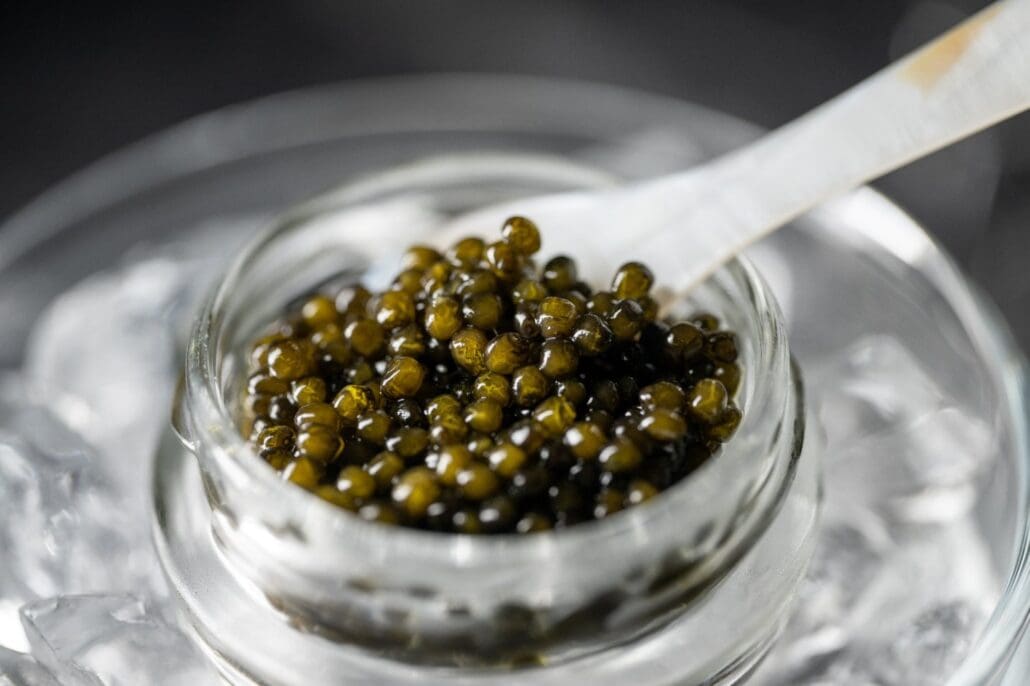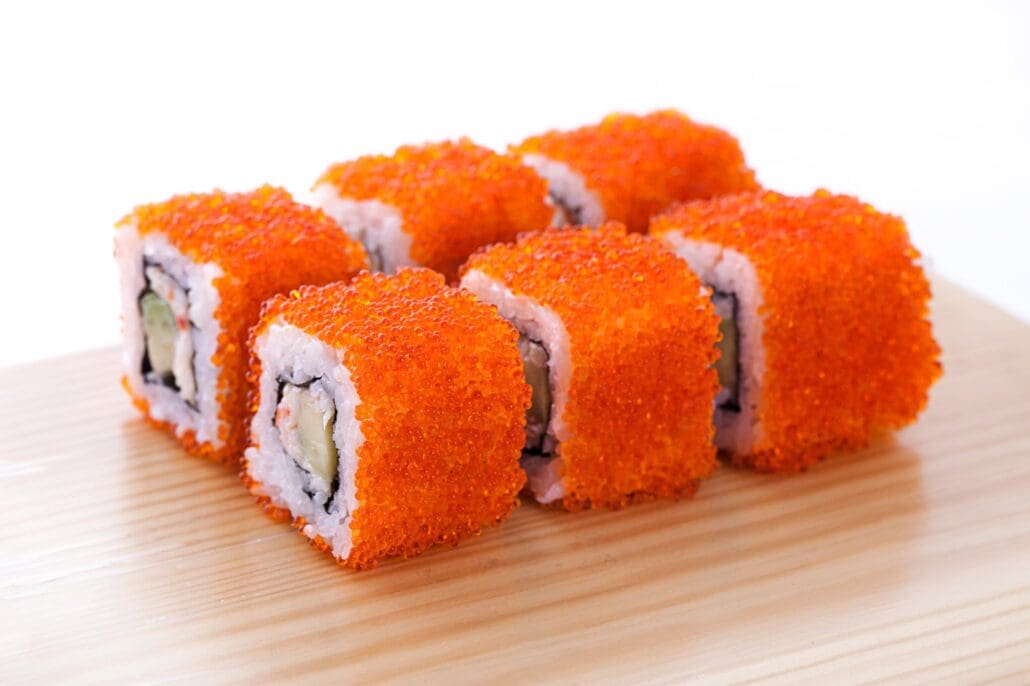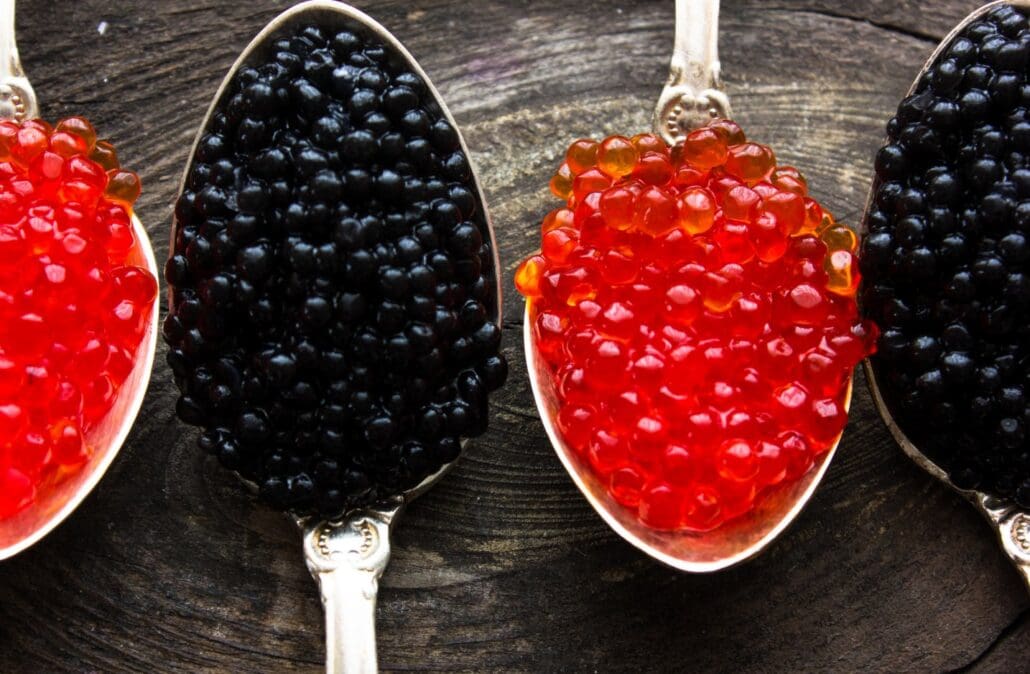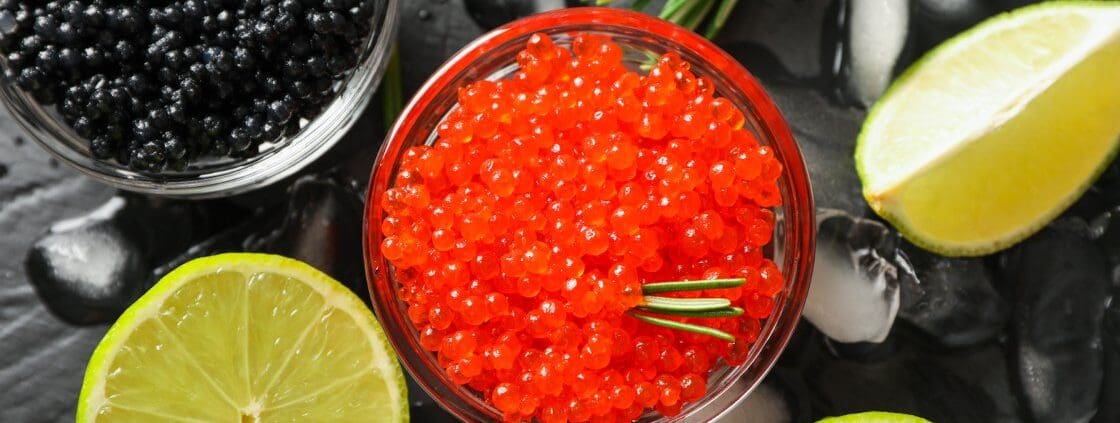A Beginner’s Guide to Understanding Masago vs. Caviar
If you’ve ever dined at a fancy restaurant or browsed a sushi menu, you’ve probably come across two tiny, colorful gems: masago and caviar. While both are delicious and come from fish, they’re not the same thing—even though people often just call them “fish roe.”
Masago and caviar have different origins, unique flavors, and distinct roles in the food world. In this guide, we break down the differences between caviar and masago so you can enjoy these delicacies like a pro!
What Is Caviar?

Caviar is a ubiquitous term that’s often misused. It’s a common misconception that all fish eggs can be classified as caviar. However, caviar refers exclusively to the salted roe of Sturgeon species, such as Osetra and Beluga Hybrid.
Much like the confusion between masago vs. caviar, other types of fish eggs are often incorrectly called caviar. Simply put, if roe isn’t from a Sturgeon species, it’s not technically caviar.
Key Characteristics
- Origin: Sturgeon species are typically native to the Black and Caspian Seas. However, farm-raised caviar can come from all over the world.
- Appearance: The color of true caviar ranges from light gold to deep black. The pearls are often larger than other roe products and have a glistening, glossy outside.
- Flavor Profile: Caviar is typically rich, complex, briny, and oceanic. But tasting notes will vary widely with different types of roes.
- Texture: Usually smooth and buttery yet firm with a satisfying pop.
- Serving Style: Often served on its own from a glass bowl with a mother-of-pearl spoon to preserve the delicate, nuanced flavors. Accompaniments are usually simple and sparse, such as blinis, toast points, crackers, or potatoes.
- Price: Caviar is usually more expensive than other types of roe.
What Is Masago?

A key difference between caviar and masago is that masago is the roe from Smelt species, with Capelin fish being the most common by far.
Masago has close ties to Japanese cuisine. A major difference between masago vs. caviar is that masago is often used to top sushi, poké bowls, and other dishes. It’s more of an extra ingredient for enhancing existing foods rather than a standalone delicacy.
Key Characteristics
- Origin: The Smelt roe is usually sourced from cold waters in the Arctic, North Pacific, and North Atlantic Oceans.
- Appearance: Compared to caviar, masago is usually smaller and less shiny. The color is naturally translucent or pale yellow, but it’s often dyed bright red or orange.
- Flavor Profile: The flavor of masago is similar to caviar, but more subdued and muted. It’s usually quite light and mild with a slight hint of brininess and sweetness.
- Texture: When comparing masago vs. caviar, masago tends to be crunchier and somewhat sandy, lacking the decadent rich, buttery mouthfeel of caviar.
- Serving Style: Usually added on top of Japanese dishes, such as sushi and poké bowls.
- Price: Masago is usually much more affordable than caviar.
Production and Harvesting
Now that you’re familiar with the fundamental differences between caviar and masago, let’s explore their origins further. Understanding what goes on behind the scenes will help you recognize why both types of roes are so distinct from each other.
Caviar Production
Many Sturgeon species are very rare, and it can take up to 20 years for them to reach maturity and start producing roe. Sourcing wild caviar and running a caviar farm are both extremely expensive and time-consuming endeavors.
Once the caviar is finally harvested, it goes through stringent curing and grading processes before finally reaching the public. Packaging and shipping the caviar is also very costly due to its strict temperature requirements.
Masago Production
In contrast to the scarcity of Sturgeon species, Capelin and other Smelt species are much more widely available—a factor that directly affects the price difference between masago vs. caviar.
Farming and harvesting are much faster and easier thanks to the relative abundance of the roe. Furthermore, masago doesn’t have the same stringent quality standards. It often includes additives to mask the flavor of low-quality roe, such as soy sauce or sugar.
Which Type of Roe Is Right for You?
Now that we’re finished comparing the differences between caviar and masago, let’s summarize their ideal use cases.
Select Caviar If
- You want to treat yourself and/or guests to the epitome of luxury and decadence.
- You want to experience the true essence of fish roe without any additives.
- You’re hosting an elegant event that calls for traditional, upscale hors d’oeuvres.
Select Masago If
- You’re not concerned about quality and simply want the most budget-friendly option.
- You’re making Japanese cuisine, such as sushi or poké bowls.
- You’re making fusion dishes and want to experiment with unique ingredients.
Other Types of Roe

While caviar is the quintessential roe delicacy, there are other options available, too. For example, Salmon roe, Trout roe, and Paddlefish roe are very popular among caviar enthusiasts and can be served in similar ways.
Tobiko, kazunoko, mentaiko, and tarako are similar to masago and are usually used in Japanese cuisine, but they come from different species.
Indulge in Our Exquisite Caviar Collection
We hope this guide to masago vs. caviar has been helpful as you explore your roe options! In order to truly experience the stark difference between caviar and masago, you must start with top-shelf caviar. Fortunately, you’re in the right place!
Caviar Emporium is a family-owned and operated caviar store. We partner directly with producers so we can offer some of the world’s most exquisite American caviar and imported caviar at competitive prices.
We invite you to explore our exclusive caviar collections. Shop with confidence, knowing each batch is packed to order to ensure a level of freshness you simply won’t get elsewhere.


